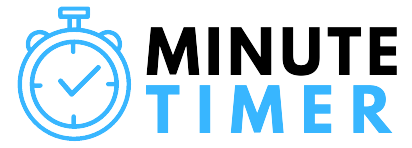
Effective meetings are crucial to project coordination, decision-making, and fostering collaborative environments. However, without proper management, meetings can become inefficient or overly lengthy. One key tool to maintain productivity and focus in meetings is the use of a timer. The importance of a timer in ensuring effective meetings cannot be overstated. It aids in time management, improves focus and efficiency, encourages agenda adherence, promotes fairness among participants, and helps manage fatigue through necessary breaks.
Importance of Time Management in Meetings
In the modern corporate world, time is a precious commodity. With increasing workloads, overlapping schedules, and constant deadlines, every minute is of essence. This holds particularly true for meetings, which are essential but can quickly become time-consuming if not effectively managed. Hence, the role of a timer in managing the duration of a meeting becomes crucial.
The Role of a Timer in Ensuring Timeliness
The primary function of a timer in a meeting setting is to ensure that the meeting adheres to its predetermined duration. At the start of the meeting, the timer is set to match the allotted time, ensuring that every participant is aware of the time constraints. This not only gives the meeting a structured framework but also introduces a sense of urgency to maintain the pace and stay on schedule.
Avoiding Meeting Overruns and Respecting Everyone’s Time
An overrun meeting is not merely an inconvenience; it disrupts schedules, creates stress, and may lead to the devaluation of the meeting itself as attendees become more focused on the ticking clock than the content of the discussions. By using a timer, meeting hosts can reduce the likelihood of overruns, respect everyone’s time, and ensure that participants can engage fully without worrying about their subsequent commitments.
Encouraging Punctuality and Regularity
Moreover, the consistent use of a timer sends a clear message about the value of punctuality and regularity. When participants see that the meeting starts and ends exactly as scheduled, they are more likely to be punctual in future meetings. This eliminates time wasted in waiting for latecomers or extending discussions beyond planned time.
In conclusion, a timer serves as an indispensable tool in the arsenal of effective meeting management. By fostering a culture of punctuality, preventing meeting overruns, and ensuring adherence to the planned duration, a timer significantly enhances time management in meetings, leading to improved productivity and satisfaction among attendees.
The Need for Focus and Efficiency in Meetings
Meetings are platforms for idea sharing, decision making, and problem-solving. To achieve these objectives, it is essential that the participants remain focused and discussions are efficient. The absence of focus can lead to off-topic conversations and unnecessary discussions, resulting in decreased productivity. Here, a timer can act as a subtle, yet potent tool for improving focus and efficiency.
How a Timer Enhances Focus
A timer creates an invisible boundary around the conversation, subtly reminding participants that their time to discuss, question, and debate is finite. This fosters an environment where attendees are motivated to stay focused on the topic at hand. It also curtails any tendency to go off on tangents, keeping the discussion concentrated on the primary objective.
Promoting Efficiency Through Timed Discussions
Efficiency in meetings can be interpreted as the accomplishment of or progress toward the meeting’s objective within the allocated time. A timer helps by providing a tangible limit to the discussions. Knowing that the time is ticking away prompts participants to structure their thoughts more succinctly, express their ideas more precisely, and make decisions more swiftly. This can make the whole meeting more efficient.
The Timer as a Subconscious Reminder
Moreover, a visible timer also serves as a continuous subconscious reminder of the passing time. It makes participants aware of the need to maintain the meeting pace, encouraging them to interact more efficiently.
In summary, the use of a timer in meetings can greatly enhance focus and efficiency. By serving as a continuous reminder of the limited time, a timer helps to keep discussions on track and prompts more efficient interaction. It encourages attendees to be concise, stay relevant, and fosters a culture of effectiveness and respect for others’ time.
Are you looking for a ton of tips? Read our Top 10 Tips for Maximizing Efficiency with MinuteTimer
Setting an Agenda: A Pivotal Aspect of Meetings
Setting a clear, well-defined agenda is a critical element of effective meetings. It outlines the key points to be discussed, assigns priority to various topics, and provides a roadmap for the conversation. However, merely having an agenda is not enough; strict adherence to it is just as crucial to ensure that all points are adequately covered and the meeting objectives are met. Here, a timer plays an instrumental role.
Using a Timer for Topic Allocation
To ensure agenda adherence, a timer can be utilized to allocate specific time slots for different agenda items. Before the meeting starts, the host can decide how much time to allocate to each topic based on its importance and complexity. This approach ensures that every point on the agenda gets the attention it deserves. It also ensures a balanced discussion and avoids the risk of some topics consuming the majority of the meeting time, while others are overlooked.
Preventing Discussion Monopolization with a Timer
Often in meetings, one or two topics tend to dominate the conversation, leading to other important points being rushed or completely missed. Using a timer helps prevent this monopolization of the discussion. When the allocated time for a topic expires, the meeting host can guide the participants to move on to the next item, thereby ensuring a fair distribution of time.
Promoting Comprehensive Discussion and Decision-Making
Adhering to the agenda using a timer also promotes more comprehensive discussion and thoughtful decision-making. It encourages participants to cover all aspects of an issue within the allotted time, which can lead to more effective problem-solving and decision-making.
In conclusion, a timer is a valuable tool for ensuring agenda adherence in meetings. It helps to balance the discussion, prevent topic monopolization, and promote comprehensive and fair consideration of all agenda items. By fostering discipline and structure, a timer helps to maximize the output of a meeting, enhancing its overall effectiveness.
Importance of Fairness and Equality in Meetings
Fairness and equality are vital to fostering a collaborative and inclusive environment in any meeting. Ensuring that all attendees have an equal opportunity to voice their opinions not only promotes diversity of thought but also leads to more comprehensive discussions and better decision-making. However, achieving this balance can be challenging. Here, a timer can play a significant role.
Creating Equal Opportunities with a Timer
A timer can be used to allocate equal speaking time to all meeting participants, thus creating a platform for everyone to contribute their thoughts and ideas. By setting a predetermined amount of time for each person, a timer ensures that no one person dominates the discussion, and everyone’s input is valued equally. This not only respects individual contributions but also promotes diversity in discussions.
Promoting Inclusivity in Discussions
Fair distribution of time can make attendees feel more included and valued. When people know they have a designated time to speak, they’re more likely to engage in thoughtful preparation and active participation, which can enrich the meeting’s content. This leads to a more inclusive discussion where various perspectives are shared, leading to more innovative solutions and better decision-making.
Avoiding Dominance and Encouraging Active Participation
In the absence of a timer, meetings can often be dominated by a few vocal individuals, while the quieter ones may struggle to contribute. A timer can be used to control the speaking time of each participant, ensuring that everyone gets a fair chance to express their ideas. This promotes active participation from all attendees and avoids the risk of any one individual or group dominating the meeting.
In conclusion, the use of a timer can significantly promote fairness and equality in meetings. By allocating equal time for each participant and avoiding the dominance of a few, a timer helps to create an inclusive environment where everyone’s contributions are valued. This leads to a more diverse discussion, increased participant engagement, and ultimately, better outcomes for the meeting.
Understanding the Importance of Breaks in Meetings
Extended periods of continuous work or discussion can lead to cognitive fatigue, which can severely impact productivity and the quality of decisions made during meetings. Therefore, incorporating regular breaks is essential, especially in longer meetings. Breaks allow participants to relax, refresh, and refocus, which can significantly improve the quality of their input. A timer can be instrumental in enforcing these vital breaks.
Using a Timer to Schedule Breaks
A timer can be used to schedule regular breaks during meetings. For instance, in a two-hour meeting, a break of 5-10 minutes could be scheduled after every 30-45 minutes of discussion. This regular “downtime” provides attendees with a much-needed opportunity to rest their minds, stretch, hydrate, or attend to personal needs, helping to maintain their attentiveness and engagement when the meeting resumes.
Combating Mental Fatigue
Prolonged focus on complex issues without breaks can lead to mental fatigue, resulting in a decline in cognitive performance. This may manifest as difficulty in understanding new information, reduced creativity, and poorer decision-making. Regular breaks, as signalled by a timer, help manage this fatigue. They provide intervals for the brain to rest, improving the ability of participants to assimilate information and contribute effectively.
Promoting Re-Engagement and Performance
Scheduled breaks also allow participants a moment to reflect on the information discussed, perhaps even sparking new ideas or clarifying thoughts. After the break, attendees tend to come back re-energized and more focused, leading to improved performance and a more fruitful discussion.
In conclusion, the use of a timer for scheduling breaks in meetings plays a pivotal role in fatigue management. It promotes cognitive rest, re-engagement, and ultimately enhances the overall productivity and effectiveness of meetings. By ensuring regular breaks, a timer can help to maintain the mental well-being of participants, leading to better contributions and more successful outcomes.
